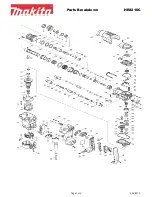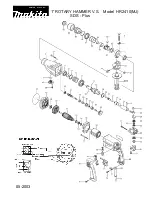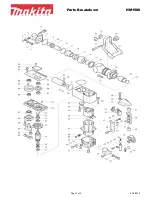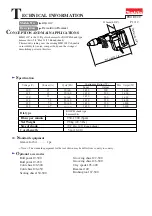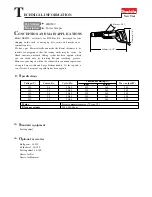
Model G0734/G0735 (Mfd. Since 12/15)
-9-
Additional Safety for Scroll Saws
BLADE GUARD. The blade guard protects the
operator’s hands and fingers from the moving
blade. ONLY operate this scroll saw with the blade
guard in the proper position. Keep the guard as
close as possible to the workpiece without inter-
fering with the intended operation.
CUTTING TECHNIQUES. Plan your operation
so the blade always cuts to the outside of the
workpiece. DO NOT back the workpiece away
from the blade while the saw is running, which
could cause kickback and personal injuries. If you
need to back the workpiece out, turn the scroll
saw OFF and wait for the blade to come to a com-
plete stop. DO NOT twist or put excessive stress
on the blade that could damage it. Instead, use
relief cuts for curve cuts that may twist the blade.
LEAVING WORK AREA. Never leave a machine
running unattended. Allow the scroll saw to come
to a complete stop before you leave it unattended.
SMALL WORKPIECE HANDLING. If your hands
slip while holding small workpieces with your fin-
gers during a cut, amputation or laceration injuries
could occur. Always support/feed the workpiece
with push sticks, jig, vise, or some type of clamp-
ing fixture.
CUT-OFF PIECES. Never use your hands to
move cut-offs away from the blade while the saw
is running. If a cut-off becomes trapped between
the blade and table insert, turn the saw
OFF and
allow the blade to completely stop before remov-
ing it.
HAND PLACEMENT. Never position fingers or
hands in line with the blade. If the workpiece or
your hands slip, serious personal injury could
occur.
INTENDED USE. This machine is intended for
cutting natural and man-made wood products, and
laminate covered wood products. This machine is
NOT designed to cut metal, glass, stone, tile, etc.
BLADE CONDITION. Do not operate with dull,
cracked or badly worn blade. Dull blades require
more effort to perform the cut and increase the
risk of kickback. Inspect blades for cracks and
missing teeth before each use.
BLADE TENSION. To avoid mishaps that could
result in operator injury, make sure the blade teeth
face down toward the table and the blade is prop-
erly tensioned before operating.
BLADE SPEED. Always allow the blade to come
to full speed before starting the cut. Moving
the workpiece against a blade that is not at full
speed could cause the blade to break or grab the
workpiece and draw the operator’s hands into the
blade.
BLADE CONTROL. To avoid serious personal
injury, DO NOT attempt to stop or slow the blade
with your hand or the workpiece. Allow the blade
to stop on its own.
FEED RATE. To avoid the risk of the workpiece
slipping and causing operator injury, always feed
stock evenly and smoothly. DO NOT force or twist
the blade while cutting, especially when sawing
small curves.
Содержание G0734
Страница 40: ......



























